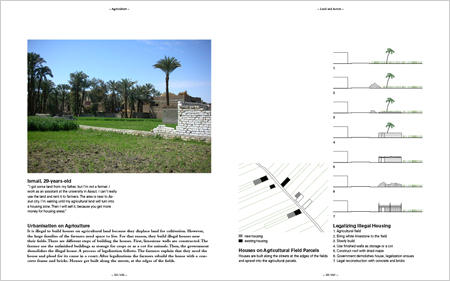Nile Valley – Urbanization of Limited Resources

Professors: Roger Diener, Marcel Meili
Assistants: Mathias Gunz, Rolf Jenni, Milica Topalovic, Christian Müller Inderbitzin
Assiut University collaborators: Prof. Magdi Radwan Dr.Aymen Hashem, Dr. Nady AbdelKarim Ahmed Hasem, Islam Nofal, Motaz Tarshan
Assiut University students:Safa Ali, Maha Zaki, Raghda Abdel Aziz, Ahmed Radwan, Mona Mohamed, Sara Husain, Asma Ahmed, Ahmed Mousa, Ahmed Husain, Asmaa Ali, Elham Ahmed, Saad Mohamed, Basma Abdel Raheem, Rehab Mohamed, Riham Kenawy, Kristeen Iskander, Engi Abadeer, John Hakim, Sana Zakhari, Karima Mousa, Hala Ahmed, Ahmed Mahmoud, Mohamed Omar, Asmaa Mohamed, Tagreed Wakkad Sara, Mohamed, Manar Atea, Roaa Mahrous, Shaza Ahmed, Safa Husain, Zeinab Mohamed, Sara Saleeb, Hisham Mohamed, Nivin Awad, Mohamed Albassaty
Graphic Designer: Absolut Agentur, St. Gallen
Editorial Supervisors: Mathias Gunz, Christian Mueller Inderbitzin, Rolf Jenni
Editorial Assistant: Tiffany Wey
Printed by Druckerei Weber GmbH & Co., Lörrach.
Published by ETH Studio Basel: Contemporary City Institute, Basel 2010

The Nile Valley covers merely 5% of Egypt’s territory, while at the same time providing a living environment for 95% of the country’s population. This thousand kilometer long and fertile strip of land embedded within the smooth topography of the valley forms a unique cultural landscape, birth- place to one of the world’s most ancient civilizations. Since ancient times, life in the NileValley is only enabled by the waters on the Nile river whose scarcity produces a sharp edge to the barren desert. Today, this ‘linear oasis’ experiences strong population growth while its economy is still based on traditional small-scale agriculture.Within a living environment restricted by the Nile’s limited water resources, urbanization almost always occurs at the expense of productive farming land. In one of the most fertile regions of the world, food self-sufficiency is increasingly threat- ened. Meanwhile, global modes of production and distribution have arrived in the Nile Valley but unaccompanied by integrative force. Pre-industrial modes of life meet global dreams of luxury in a region that seems not to have found its place yet in a globalized world.Yet, perhaps the most stunning observation in the Nile Valley is that despite enormous pressures, the region maintains a relative stability. ETH Studio Basel has travelled to Egypt to research—within a predefined section of the Nile Valley—this specific mode of urbanization.
PROJECTS: NILE VALLEY

